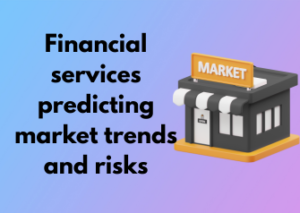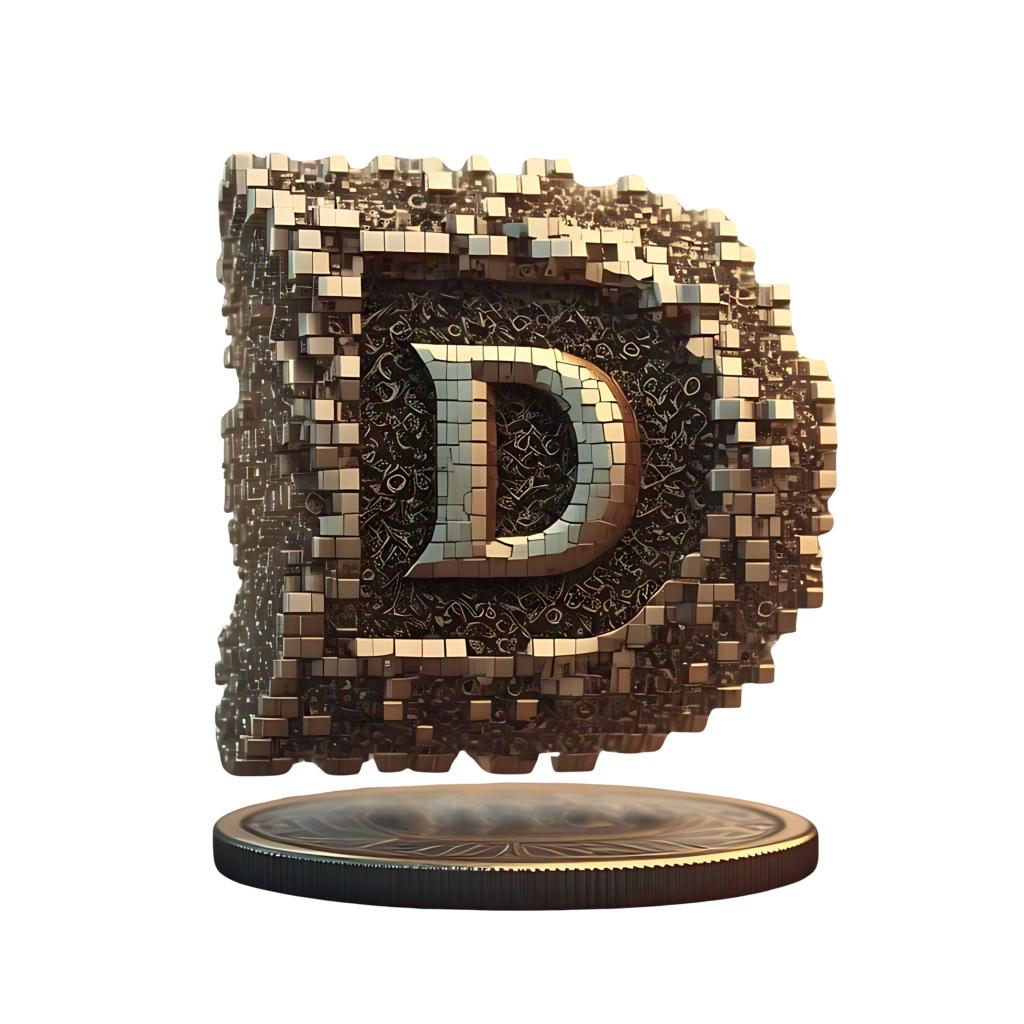Let’s rewind to when Decentralized Finance, or DeFi, was the star of the crypto world. A few years back, everyone seemed to be buzzing about this revolutionary idea that aimed to disrupt traditional finance. Who wouldn’t be excited? DeFi promised to replace banks, lending institutions, and financial middlemen with smart contracts and blockchain technology. Imagine sending payments or securing loans in minutes, without needing to deal with complex paperwork or hefty fees—it sounded like a dream come true.
Back then, the excitement wasn’t just noise; there was real action. DeFi projects like Uniswap, Compound, and Aave took the stage, showcasing innovative ways to trade, borrow, and lend without a centralized authority. Even skeptics of cryptocurrency felt a twinge of intrigue while watching billions pour into DeFi’s ecosystem. Terms like “liquidity pools,” “yield farming,” and “staking” became part of everyday discussions for crypto enthusiasts. It wasn’t just a tech-savvy playground either—real money was on the line. By early 2021, the total value locked (TVL) in DeFi projects reached staggering heights, crossing $100 billion.
Fast forward to today, and it’s fair to ask, “What happened to all that buzz?” The DeFi space, while still active, doesn’t seem as dominating as it once was. Some people argue it needs a rebrand, while others suggest DeFi is quietly rebuilding or grappling with new challenges. Regardless of where you stand, understanding this shift requires separating the past hype from today’s reality.
The Appeal That Got Everyone Talking
- Decentralization: Unlike traditional finance, DeFi promised to cut out centralized middlemen like banks. This was ideal for tech-savvy users who valued privacy and control.
- Global Access: DeFi erased borders. Anyone with an internet connection could tap into financial services, regardless of where they were in the world.
- Transparency: With smart contracts and blockchain auditing, users could actually follow where funds were flowing—something traditional banking lacked.
These features appealed to innovators, investors, and even first-time crypto users. Yet, many of the promises made during DeFi’s “golden age” remain only partially realized, which brings us to the current “noise.”

Why People Are Mixed on DeFi Today
While its foundations are still rock-solid, the DeFi landscape isn’t as clean-cut as it initially seemed. The early buzz was fueled by people rushing in to capitalize on insane returns. But once market conditions changed—and let’s not forget some high-profile scams and security failures—the excitement dimmed.
However, “noise” doesn’t mean failure. In fact, some experts argue that DeFi is laying low, quietly refining its flaws. Illiquidity issues, complicated interfaces, and regulatory uncertainty still plague the system. But just because it’s no longer the darling of headlines doesn’t mean it’s dead. Much like the early days of the internet, DeFi’s initial rush is giving way to slower, steadier growth that could fuel more lasting change.
What Happened to the Hype: Factors Behind the Decline
DeFi, or Decentralized Finance, once captured the imagination of crypto enthusiasts and financial adventurers alike. Remember the buzz? Headlines screaming about record-breaking yields, revolutionary projects promising to upend traditional banking, and that cult-like enthusiasm—you couldn’t escape it! But lately, the noise has quieted down, raising a big question: what exactly happened to all that hype?
1. Bear Market Blues: The Macro Factors
Let’s address the elephant in the room: the broader macroeconomic environment. The crypto market is no stranger to volatility, and the last couple of years have been rough. High inflation, rising interest rates, and general market uncertainty pushed investors toward safer, more traditional assets. Even seasoned crypto enthusiasts pulled back, leaving decentralized finance in a tough spot.
DeFi, like any innovation, thrives in periods of abundance. Throw in a global market downturn, and you’ve got a perfect storm that makes everyone think twice about locking their hard-earned crypto into yield farms or liquidity pools.
2. Oversaturation: Too Many Projects, Not Enough Value
At the peak of the DeFi craze, it seemed like every day brought the launch of another new platform or token. Remember the confusing ticker symbols and those quirky animal-themed projects? While variety can be exciting, it created a major problem: oversaturation.
Many projects were poorly thought-out, rushed to market, or outright scams. Rug pulls (where developers vanish after raising funds) became so frequent that trust in new platforms eroded. Users grew fatigued navigating the chaos, and eventually, the pool of willing participants began to shrink.
3. Regulatory Uncertainty: The Cloud of Legal Risk
Governments and regulators worldwide began to take DeFi more seriously—but not in the way enthusiasts had hoped. Regulatory bodies questioned the legality of some DeFi operations, expressing concerns about money laundering, fraud, and consumer protection. This created a climate of uncertainty.
Examples, you ask? Sure! When news broke of potential crackdowns on DeFi platforms in regions like the U.S. or Europe, people hesitated to engage. Fear of regulatory intervention cooled both excitement and investment, as nobody wants to put their funds in an ecosystem that might face legal obliteration overnight.
4. Usability Woes: Complexity Is a Barrier
Let’s be honest here—DeFi has never been user-friendly. For the average person, the learning curve to navigate wallets, manage private keys, and participate in staking or lending is steep. Add to that the fear of making a wrong move and losing money forever (ever sent tokens to the wrong wallet address? Ouch!), and you start to understand why the broader population hasn’t boarded the DeFi train.
5. Diminishing Yields and Rewards
Initially, DeFi projects earned attention by offering absurdly high yields. These “get-rich-quick” promises attracted hordes of users, but over time, the rewards diminished as competition increased and market conditions tightened. When the promise of sky-high returns faded, so did the enthusiasm of many early adopters.
Market Trends: A Shift in Focus or a Temporary Setback?
Decentralized Finance (DeFi) has undoubtedly experienced a rollercoaster ride since its meteoric rise to fame. But where do things currently stand? Are we witnessing a permanent loss of interest, or is this lull part of a natural progression? Let’s dive deeper to understand these shifting tides and what they mean for DeFi enthusiasts and skeptics alike.
Examining the Shift
It’s no secret that every emerging sector goes through cycles of explosive growth and slower consolidation, and DeFi is no exception. Over the last couple of years, a palpable shift has taken place in how investors and developers approach this space. While DeFi once captured headlines with triple-digit annualized yields and revolutionary promises of cutting out traditional banking, the attention has somewhat simmered down. But let’s not confuse this with irrelevance.
Part of this shift stems from the maturation of the cryptocurrency market as a whole. DeFi projects that aimed to create “quick riches” are now being filtered out. What remains are platforms and solutions striving to find sustainable, long-term value. This may seem less exciting, but it’s important for DeFi’s longevity. In reality, this shift could serve as a much-needed workout—shedding unhealthy excesses and focusing on strength and durability.
Short-Term Setback, Long-Term Strategy?
If we’re being honest, DeFi has faced several challenges in recent years that contributed to the waning hype. The global economic landscape plays a part; rising interest rates have dampened risk appetite, causing funds to retreat from speculative sectors like DeFi. Also, let’s not overlook the collapse of certain high-profile DeFi projects that shook investor confidence.
Still, many in the industry remain optimistic—and for good reason. Comparing DeFi to the early days of the Internet, for instance, reveals striking similarities. It took years for the dot-com bubble to lead to a functional and lucrative digital economy. Could DeFi be following a similar path? What we’re seeing today could very well be the industry laying the groundwork for its next chapter.
Where’s the Focus Now?
An undeniable trend has been a shift in focus. DeFi is becoming less about quick profits through yield farming or speculative trading and more about enabling broader financial access. Platforms are zeroing in on underserved audiences, offering innovative solutions in areas like:
- Decentralized lending and borrowing: Making credit accessible without the traditional hurdles of credit scores or intermediaries.
- Cross-border payments: Tackling inefficiencies and high fees associated with international money transfers.
- Tokenizing real-world assets: Building bridges between the digital and physical economies by representing traditional assets like real estate and commodities on-chain.
This pivot is promising and could drive adoption from a much broader audience than before. Yes, it may seem less “sexy” than meme tokens and overnight riches, but it’s a step toward meaningful impact.
What Should You Watch For?
Market trends in DeFi suggest a healthy, though occasionally shaky, evolution. Keep an eye on:
- Regulatory developments: Clarity from regulators will encourage institutional players to participate, bringing legitimacy and stability.
- Innovations in Layer 2 solutions: These technologies are helping scale DeFi platforms by reducing costs and boosting transaction speeds.
- Real-world use cases: The success of applications in emerging markets or underbanked populations will be a game-changer.
The Role of Security Risks and Scandals in Shaking Trust
Let’s face it: one of the biggest barriers DeFi has faced in its journey toward mainstream acceptance is trust. And when it comes to trust, nothing shakes the foundation quite like security risks and high-profile scandals. In the crypto space, DeFi may promise financial freedom, transparency, and innovation, but it has also been riddled with cautionary tales. Let’s unpack why this happens and what it means for DeFi moving forward.
The Double-Edged Sword of Innovation
Decentralized Finance thrives on cutting-edge technology and bold experimentation. However, that fierce pace of innovation creates vulnerabilities. With the ever-growing complexity of DeFi smart contracts and protocols, ensuring absolute safety can feel like playing whack-a-mole. Each newly launched project brings the risk of bugs in the code or unforeseen exploits that hackers are quick to take advantage of.
You’ve probably heard of some of these security breaches making headlines: multi-million dollar losses from flash loan attacks, rug pulls, and compromised wallets. Take for example the infamous Poly Network hack in 2021, where over $600 million worth of cryptocurrency was stolen. Although much of it was eventually returned, the incident exposed glaring flaws in DeFi’s security infrastructure. And that’s just one of the many examples. High-profile breaches like these don’t just cost money—they severely damage user confidence in DeFi projects.
Scandals that Steal the Spotlight
Unfortunately, scandals have become a recurring theme in DeFi’s narrative. Rug pulls, where deceptive developers abandon a project after pocketing investors’ funds, have left a stain on the industry. These dishonest schemes typically target newcomers lured by the promise of high returns. Suddenly, that innovative, democratized financial system starts looking like a risky gamble rather than a safe haven.
Think back to the SushiSwap drama in 2020. The pseudonymous founder, Chef Nomi, cashed out $14 million worth of tokens, causing mass panic. Although Chef Nomi later returned the funds, the damage was already done. Episodes like this raise a key question for potential users: Can DeFi protocols be trusted without regulation or accountability?
Can Trust Be Rebuilt?
Here’s where things get interesting. Security risks and scandals may put DeFi on shaky ground, but they’ve also spurred the industry to learn and adapt. Developers are now laser-focused on auditing smart contracts, implementing decentralized governance models, and introducing insurance protocols to mitigate risks. More than ever, the mantra “don’t trust, verify” is resonating within DeFi communities. Platforms that publicly share audit results or operate with transparency are setting a new standard for trust.
- Smart contract audits: Companies like CertiK and Trail of Bits are gaining prominence for their blockchain code reviews, helping weed out vulnerabilities before they can be exploited.
- Bug bounty programs: Platforms like Immunefi reward ethical hackers for identifying weaknesses, adding another layer of defense.
- Emphasis on education: Projects now make educating users about risks and how to protect themselves a top priority, cultivating a more informed user base.
Technological Updates: Is DeFi Evolving under the Radar?
Let’s hit pause for a second. When was the last time you heard some exciting new tech announcement in the decentralized finance (DeFi) space? Not recently, right? That doesn’t mean it’s game over. DeFi might seem quieter on the surface, but beneath this supposed lull, there’s plenty bubbling. It’s evolving—albeit under the radar—and today, we’ll look at the quiet but potent technological advances that could redefine the space.
New Protocols: Small But Mighty Improvements
The DeFi ecosystem has always thrived on innovation. Sure, the explosive breakthroughs of 2020 might feel like a distant memory now, but not all advances come with fireworks. Developers are constantly working on creating and refining protocols to fix the major pain points of existing platforms.
Take interoperability, for example. One of DeFi’s challenges has been bridging different blockchains. With significant updates (like cross-chain solutions and interoperability-focused projects like Polkadot and Cosmos advancing rapidly), more platforms are now talking to each other. This seamless connectivity is a game-changer for both developers and users, unlocking greater opportunities for building complex financial products.
Scalability: No, the Numbers Don’t Lie
Remember all the fuss about high gas fees during Ethereum’s peak usage times? That remains a sore subject for many DeFi supporters. However, with Ethereum’s shift to Ethereum 2.0 (including the launch of the proof-of-stake consensus mechanism), there’s a clear push to scale. On top of that, Layer 2 scaling solutions like Arbitrum, Optimism, and zkSync are gaining traction.
These upgrades mean better performance, faster transactions, and reduced costs. The ultimate benefit? DeFi becomes more accessible to users who were previously turned off by exorbitant fees. These changes may not immediately dominate headlines, but their impact on the ecosystem is invaluable.
User Experience: No More Rocket Science
Let’s be honest—DeFi has suffered because of its steep learning curve. For years, interacting with DeFi platforms felt like you needed a Ph.D. in blockchain engineering just to stake some tokens. Thankfully, developers and designers have taken lessons from Web2 counterparts by improving the user interface (UI) and overall user experience (UX).
Newer platforms are integrating slick, intuitive designs and guided workflows to make DeFi less intimidating. Wallets like MetaMask are now simpler to use, and some new entrants are offering mobile-first, wallet-embedded DeFi experiences. All of this points to a more inviting and inclusive entry point for everyday users.
Privacy and Compliance: Solving the Regulation Puzzle
Here’s where things get intriguing. As much as DeFi champions freedom, regulators worldwide are leaning in, bringing new guidelines on the horizon. This might sound restrictive, but it’s inspiring innovation in areas like privacy-preserving compliance solutions.
For instance, protocols like Tornado Cash (despite controversies) showcase methods for ensuring financial privacy, while others are working on tools that comply with know-your-customer (KYC) and anti-money-laundering (AML) regulations—without entirely compromising decentralization. These updates could be crucial in DeFi’s long-term survival and adoption.
Competing Technologies: Who’s Stealing DeFi’s Thunder?
Decentralized Finance, or DeFi, has undoubtedly been one of the most talked-about innovations in the financial space over the last few years. But, as the initial roar fades to a quieter hum, many are asking—what’s overshadowing DeFi? Let’s dig into the competing technologies that are grabbing attention and why they might be giving DeFi a run for its money.
Central Bank Digital Currencies (CBDCs): The Government-backed Alternative
CBDCs are here, and they’re bringing the weight of entire nations with them. Unlike DeFi, which is rooted in decentralization and removing intermediaries, CBDCs operate under the control of central banks. This trust factor, combined with state-backed legitimacy, makes CBDCs appealing to those wary of DeFi’s unpredictable nature.
Governments globally, including those of China and Europe, are testing or rolling out CBDCs to streamline financial systems, increase transaction transparency, and provide stable digital currencies. For those who value simplicity and authority, CBDCs may feel like a safer bet than navigating the murky waters of DeFi protocols. However, this shift isn’t all bad news for DeFi. These centralized options may nudge people toward decentralized ecosystems as they grow accustomed to digital transactions, opening doors for DeFi innovation later.
Play-to-Earn Models and GameFi: Fun Over Formality
Let’s face it—people love to have fun, even when dealing with finances. Enter GameFi, the marriage of blockchain gaming and financial incentives. In GameFi ecosystems, users earn digital tokens and NFTs simply by playing games, combining entertainment and potential profit.
For many, this sector feels far more interactive and engaging than the “serious” world of DeFi. While DeFi focuses on lending, borrowing, and staking, GameFi feels personal and playful, attracting the younger crowd who might otherwise hesitate to step into the intimidating landscape of decentralized finance. Games like Axie Infinity and Decentraland have become household names in the crypto world, proving that gamification has a strong foothold among crypto innovations.
Layer 2 Scaling Solutions: Efficiency as Priority
While DeFi platforms seek to revolutionize finance, they often face challenges like high network fees and traffic congestion, especially on Ethereum. This is where Layer 2 solutions step in, aiming to enhance transaction speed and reduce costs. Technologies like Polygon and Arbitrum have become indispensable for users looking to avoid Ethereum’s occasional bottlenecks.
What’s interesting is that some of these Layer 2 solutions are DeFi-friendly, meaning they don’t actually compete directly with DeFi—rather, they enable smoother operations for decentralized applications. Still, they overshadow core DeFi narratives for now by focusing on tech progress rather than reinventing finance itself.
Artificial Intelligence (AI): Smarter Systems, Seamless Integration
A recent disruptor redefining industries across the board is Artificial Intelligence, and the blockchain space hasn’t been exempt. Projects that integrate AI capabilities with blockchain (think personalized financial planning algorithms or automatically adjusted dynamic investments) are luring attention away from traditional DeFi platforms.
Why? Because users crave ease and precision. AI simplifies decision-making and removes complex barriers, creating an intelligent interface that effortlessly guides users through intricate processes. For newcomers intimidated by DeFi’s steep learning curve, AI-powered competitors seem like a no-brainer.
Looking Forward: The Possibilities and Limitations of DeFi’s Future
Decentralized Finance, or DeFi, isn’t dead—it’s evolving, and like every transformative technology, it’s facing its own growing pains. If you’re wondering what the path forward looks like for DeFi, let’s dive into the possibilities, the hurdles, and why the journey ahead may surprise everyone.
The Glass Half Full: Promising Possibilities
Despite recent skepticism, some exciting developments suggest DeFi is far from out of the game. Here’s what could shape its comeback:
- Wider Adoption of Blockchain: With more governments, institutions, and industries exploring blockchain technology, there’s immense untapped potential for DeFi applications to serve as critical tools in this ecosystem. Think about how underbanked populations across the globe could gain instant access to financial services, completely bypassing traditional intermediaries.
- Innovative Protocols: Developers are hard at work designing solutions to tackle scalability and inefficiency, two of the biggest challenges DeFi has faced. Projects like Layer 2 scaling solutions and advancements in Ethereum’s ecosystem (post-merge) could drastically lower entry barriers, making DeFi more user-friendly and efficient.
- Integration with Traditional Finance (TradFi): As we bridge the gap between decentralized platforms and centralized institutions, there’s potential for innovative financial products that merge the best of both worlds. Imagine a future where DeFi tools seamlessly integrate with everyday banking apps—it’s not far-fetched!
- Regulatory Clarity: Yes, regulation can be a double-edged sword, but clearer frameworks can foster investor confidence and encourage more widespread participation. As governments work to strike a balance, DeFi stands to benefit from a more stable and predictable environment.
The possibilities are there. But let’s not get ahead of ourselves just yet. Every rose has its thorns, and there are still serious obstacles to overcome for DeFi to regain its prominence.
The Hard Truths: Limitations and Challenges
While the future brims with potential, it’s important to recognize the existing limitations that could slow DeFi’s ascent:
- Security Issues: Hacks, rug pulls, and smart contract bugs have rocked the DeFi space in recent years. Until there’s a consistent track record for security and maturity, cautious investors may remain hesitant.
- Complexity for New Users: Let’s face it, DeFi can be intimidating for beginners. Wallet management, gas fees, and navigating decentralized exchanges all require a steep learning curve. Simplifying the user experience should be a top priority for DeFi’s future.
- Regulatory Uncertainty: While regulatory clarity could be a blessing, the current lack of global consensus is a major hurdle. Governments around the world are still figuring out how to approach DeFi without stifling innovation, creating a climate that feels shaky at best.
- Competition from Other Technologies: Blockchain competitors like centralized finance (CeFi) solutions and alternative blockchain systems are vying for attention, producing innovative tools that could overshadow DeFi if it doesn’t adapt quickly.
How Should We Think About DeFi’s Future?
Here’s the takeaway: DeFi’s future is not an all-or-nothing scenario. Instead, it’s likely a blend of ongoing growth, collaboration with traditional finance models, and the gradual overcoming of its current weaknesses. If you’re involved in or considering diving into DeFi, here’s some advice to keep in mind:
- Stay informed about technological updates — The DeFi space evolves rapidly, so keeping up with advancements and new protocols is essential.
- Diversify your investments: As with any financial sector, balance is key. Don’t put all your eggs in one DeFi basket.
- Advocate for education: Helping others understand DeFi reduces barriers and builds the community. The stronger the user base, the brighter the future.











